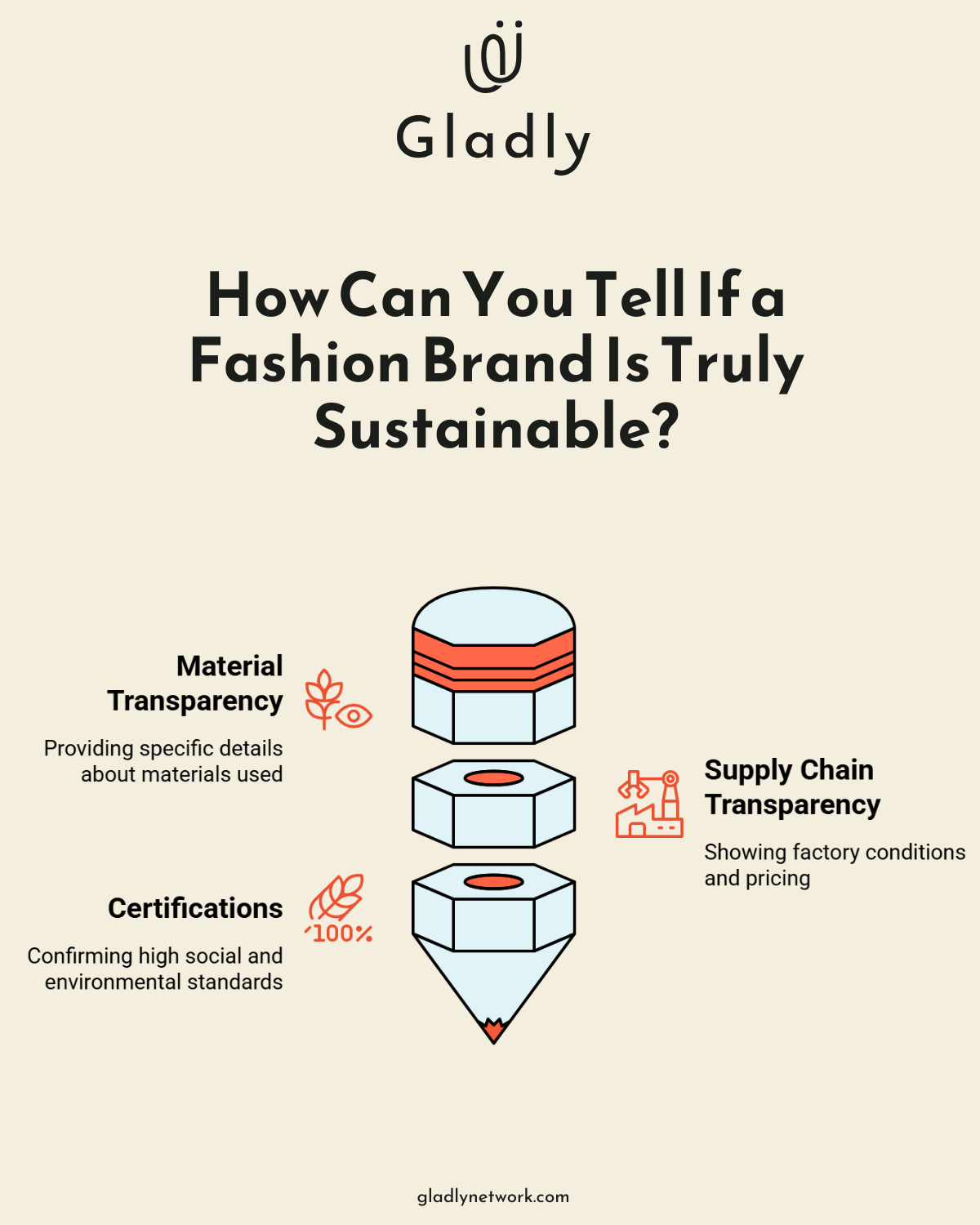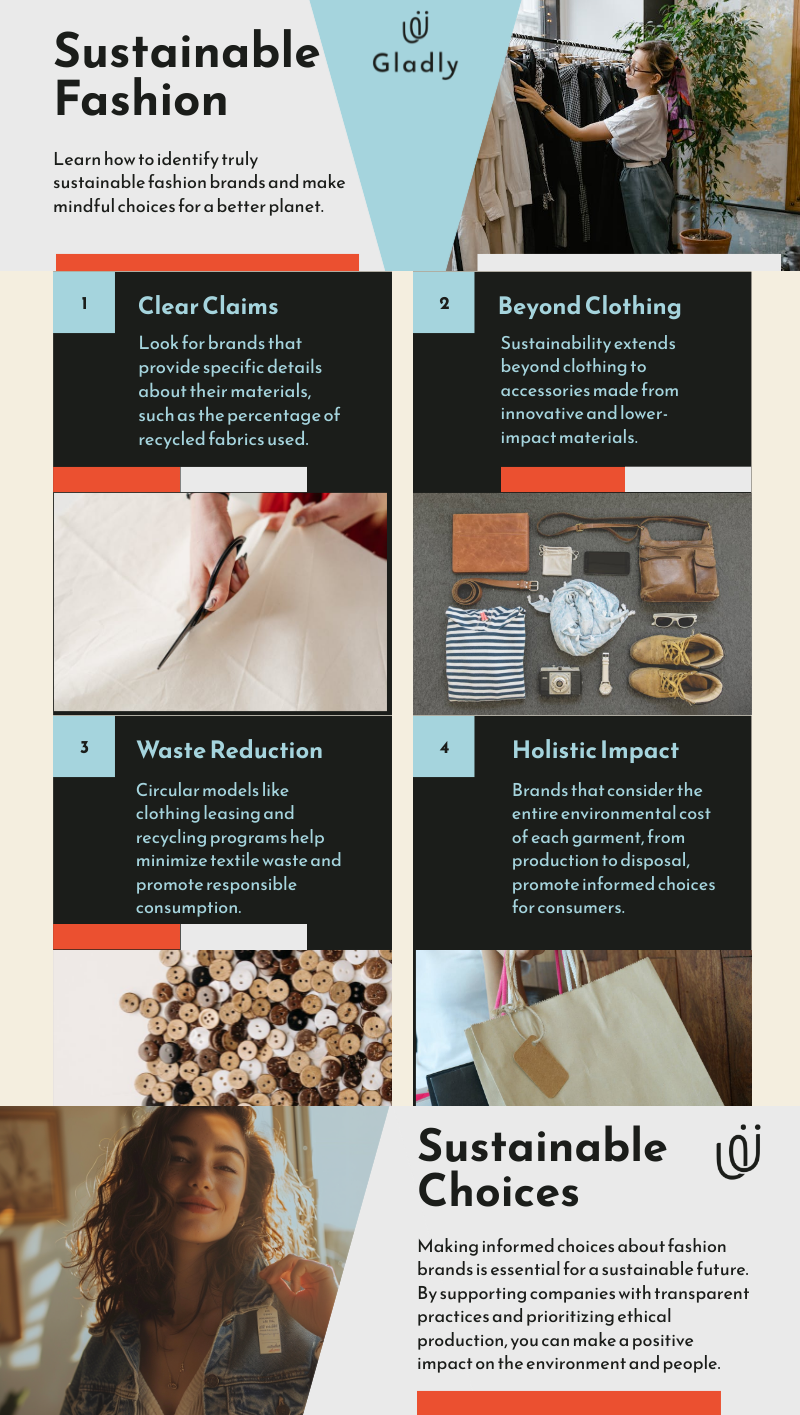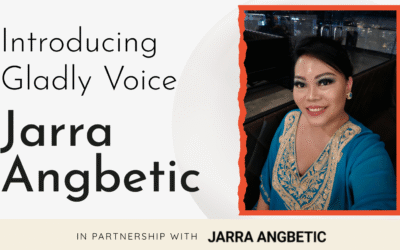At Gladly Network, we believe sustainable fashion brands can help shape a better future. The fashion industry has a significant impact on the environment. Still, small choices, like the brands we choose to support, can lead to meaningful change.
This guide will help you identify fashion brands that are truly committed to sustainability. When you support companies that care for the planet and their workers, your purchases become part of a larger movement toward positive impact.
What Is Sustainable Fashion?
Defining Sustainable Fashion
Sustainable fashion brands focus on reducing harm to the planet while creating long-term benefits for workers and communities. This movement encourages more thoughtful design, sourcing, and production at every stage of a garment’s life, from raw materials to final disposal.
The Fashion Industry’s Environmental Impact
The environmental cost of the fashion industry is hard to ignore. It’s responsible for about 10% of global carbon emissions annually, more than the emissions from international flights and maritime shipping combined. It also ranks as the second-largest consumer of water worldwide. According to the Ellen MacArthur Foundation, one garbage truck of textiles ends up in landfills or incinerators every second.

The Importance of Supporting Sustainable Brands
Supporting sustainable fashion brands is one of the most effective ways to reduce your environmental impact. Many of these brands use organic or recycled materials, requiring fewer resources and chemicals during production.. For instance, a 2014 analysis by Textile Exchange concluded that organic cotton requires 91% less irrigation than conventional cotton.
How to Spot Truly Sustainable Brands
Not all brands that claim to be sustainable actually are. Greenwashing, or making misleading environmental claims, remains common in the fashion industry. That’s why it’s important to know what to look for when evaluating sustainability.
Instead of vague promises, look for specific, measurable commitments. Patagonia, for example, pledges that 100 percent of its cotton is organically grown. They also offer a repair service to extend the life of their products, showing a real effort to reduce waste.
Transparency is another strong signal. Brands like Everlane share detailed information about their factories and pricing, helping customers make more informed decisions.
Certifications can also help. Labels such as GOTS (Global Organic Textile Standard) or Fairtrade show that a brand meets specific environmental and social standards.
Beyond Environmental Concerns
Sustainable fashion extends beyond environmental considerations – it also encompasses fair labor practices. Brands like Eileen Fisher prioritize worker welfare, ensuring safe working conditions and fair wages throughout their supply chain.
Choosing truly sustainable brands is about more than style. It’s a way to support fair working conditions and reduce the environmental impact of fashion. What we buy has influence, and conscious choices can shift the industry in a better direction.
So, how can you tell which brands are genuinely committed to sustainability and which ones are just using the label? Here’s what to look for.
Spotting Genuine Eco-Friendly Fashion
Specific Material Claims
Truly sustainable fashion brands provide clear, specific information about their materials. They avoid vague terms like “eco-friendly” and instead offer concrete details. Patagonia, for example, states that 68% of its fabrics come from recycled materials. Eileen Fisher uses organic linen and recycled polyester in many of their garments. These specific claims allow consumers to make informed decisions.
Expanding the Lens: Beyond Just Clothing
Sustainability in fashion isn’t limited to garments; accessories like bags, wallets, and phone cases also carry environmental weight. Materials, durability, and design all matter here, too. Some companies are starting to experiment with alternatives like cactus leather or cork, aiming to reduce reliance on resource-heavy materials. These choices not only lower environmental impact but also promote longevity through minimalist, well-crafted design. Andar, for example, has explored these materials in their accessories, offering a glimpse into how sustainable thinking is expanding across fashion categories.
Supply Chain Transparency
Brands committed to sustainability often showcase their supply chains. Everlane sets a high standard by providing a detailed list of its factories, complete with photos and information about working conditions. This level of openness (rare in the fashion industry) indicates a genuine commitment to ethical practices.
Waste Reduction Initiatives
Some fashion brands are finding creative ways to reduce waste and rethink how clothing is made and reused. MUD Jeans, for example, is working toward using only recycled denim by 2025. They even let customers lease jeans and return them when worn out, so the materials can be recycled into new pairs. This kind of circular thinking reflects a real shift in how fashion can become more responsible.
Third-Party Certifications
Certifications from reputable organizations lend credibility to sustainability claims. Look for labels such as GOTS (Global Organic Textile Standard), Fairtrade, or B Corp. These certifications involve rigorous standards and regular audits. Patagonia’s B Corp certification, for instance, confirms their adherence to high social and environmental performance standards.
Holistic Approach to Sustainability
True sustainability in fashion extends beyond the use of organic cotton or recycled materials. It encompasses the entire lifecycle of a garment (from production to disposal). Brands like Reformation take this holistic approach, considering factors such as water usage, carbon emissions, and worker welfare throughout their production process. Their RefScale methodology aims to compare the environmental impact of manufacturing clothes at Reformation versus comparable products, using a cradle-to-grave approach.

Once you know what to look for, the next step is doing a bit of research. Here’s how you can go deeper and find out if a brand’s sustainability claims really hold up.
How to Verify Sustainable Fashion Claims
Figuring out which fashion brands are truly sustainable takes a little extra digging. It helps to look past surface-level claims and pay attention to the details. Here are a few simple ways to do that.
Scrutinize Brand Websites
Start by examining a brand’s website thoroughly. Look for detailed sustainability reports that outline specific goals, achievements, and challenges. Pay attention to concrete metrics rather than vague statements. A brand claiming to use “eco-friendly materials” without specifying percentages or types should raise suspicion.
Leverage Sustainable Fashion Databases
Use reputable sustainable fashion directories to streamline your research. Good On You pulls all the information together and uses expert analysis to give brands an easy-to-understand score on their ethics and sustainability. The app provides detailed breakdowns of each brand’s practices, making it easier to compare options. Fashion Revolution’s Transparency Index ranks 250 of the world’s largest fashion brands based on their public disclosure of social and environmental policies, practices, and impacts.
Spot Greenwashing Red Flags
Stay alert to greenwashing tactics. Watch out for brands that make broad environmental claims without backing them up with data or certifications. A red flag is when a brand heavily promotes a small “eco” collection while the majority of their products remain unsustainable (H&M’s Conscious Collection has faced such criticism).

Seek Expert Opinions and Reviews
Don’t rely solely on brand-provided information. Seek out expert opinions and customer reviews for a more balanced perspective. Websites like Ecocult and Sustainably Chic offer in-depth analyses of various fashion brands’ sustainability claims. Customer reviews can provide insights into product quality and longevity (crucial factors in sustainable fashion). However, be aware that some review platforms may contain biased or sponsored content.
Check for Third-Party Certifications
Look for third-party certifications such as GOTS (Global Organic Textile Standard). GOTS is the worldwide leading textile processing standard for organic fibres, including ecological and social criteria. These certifications involve rigorous standards and regular audits. Patagonia’s B Corp certification, for instance, confirms their adherence to high social and environmental performance standards.
A Better Way to Buy Clothes
It isn’t always easy to tell which brands are genuine. Labels can be vague, websites can gloss over the details, and greenwashing has become just another marketing tool. But asking questions, checking materials, and paying attention to how things are made is a good place to start.

Sustainable fashion isn’t about getting it perfect. It’s about choosing better when you can, and understanding how those choices ripple outward. Who made this garment? Was it produced responsibly? Will it last? These are small questions that lead to bigger change.
At Gladly Network, we believe conscious shopping should feel empowering, not overwhelming. That’s why we connect people with brands that are moving in the right direction. When you support those efforts, even in small ways, you help shape a fashion industry that’s more honest, more careful, and more fair.
It’s not just about looking good. It’s about feeling good about what you support, every time you get dressed.











